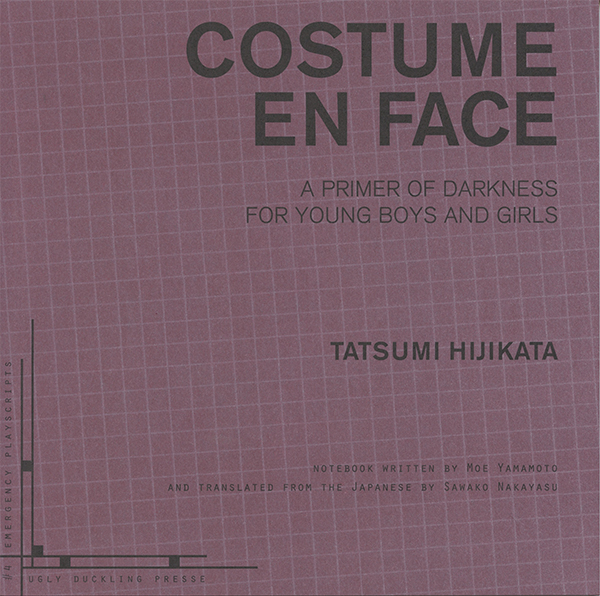Peacocks already in place when curtains rise 4 iterations
Child
Stand up with dead cylindrical tree
Dissecting Picasso with face of idiot
Line: “You know it”
Come around and confess
Yajirobe

Peacocks already in place when curtains rise 4 iterations
Child
Stand up with dead cylindrical tree
Dissecting Picasso with face of idiot
Line: “You know it”
Come around and confess
Yajirobe
His words are fingers between which sand slips.
Kurihara Nanako
As the founding father of the radical dance form that he called Butoh, Tatsumi Hijikata (1928-1986) is a legendary figure in the history of art and contemporary dance. Though influenced by Western artists and writers—the expressionist dance of Mary Wigman, the writings of Artaud, de Sade, Bataille, and Genet, and the drawings and paintings of Goya, Picasso, Toyen, Beardsley, and others–he was dedicated to the particular experience of the marginalized, Japanese suffering body after World War II. In the mid-1970s, Hijikata became concerned with developing notation for his Butoh, and some of these Butoh-fu notations remain, largely in the form of notebooks transcribed by his disciples. Costume en Face is the first publication of one of Hijikata’s notebook notations in either English or Japanese. In it we can see, for the first time, the profound interconnectedness of language and body in Hijikata’s process of composition.
Design by Steven Chodoriwsky.
Tatsumi Hijikata was born in Japan in 1928. He founded the radical dance form known as Butoh, which requires dancers to internalize complex and often grotesque images, experiences and perspectives in order to produce precise movements. Even after his abrupt death in 1986, his dance works and writings continue to be extremely influential.
One of the strangest and most beautiful dance books to come along in a while. [...] Somewhere between score and poem, the notebook takes on a kinetic life of its own, about as close to dancing as words on a page can get.
Siobhan Burke, The New York Times
Hijikata’s language implies meanings and feelings that logical language cannot convey. His words are fingers between which sand slips.
Kurihara Nanako, The Drama Review
Sawako Nakayasu is an artist working with language, performance, and translation—separately and in various combinations. She has lived mostly in the US and Japan, briefly in France and China, and translates from Japanese. Her books include The Ants (Les Figues Press), Texture Notes (Letter Machine Editions), the translation of Tatsum Hijikata’s Costume en Face: A Primer of Darkness for Young Boys and Girls (UDP), The Collected Poems of Chika Sagawa (Canarium Books), and Mouth: Eats Color – Sagawa Chika Translations, Anti-translations, & Originals (Rogue Factorial), a multilingual work of both original and translated poetry. She is co-editor of A Transpacific Poetics (Litmus Press), a gathering of poetry and poetics engaging transpacific imaginaries, as well as of a forthcoming anthology of 20th Century Japanese Poetry, co-edited with Eric Selland (New Directions). She teaches at Brown University.
Steven Chodoriwsky is a designer, artist, and educator. His research-based practice employs a diverse range of media including installation, text, performance, and audio-visual artifacts.
ISBN: 978-1-937027-53-7
Trade Paperback
Perfect-bound. 144 pp, 8 x 8 in
Publication Date: April 01 2015
Distribution: Asterism Books (US)
Series: Emergency Playscripts